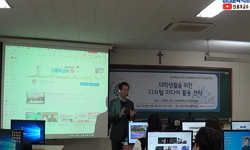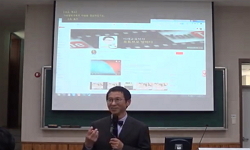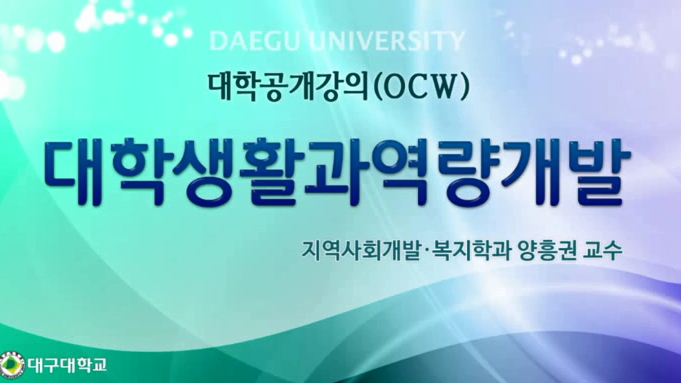This study aims to investigate the awareness of food and nutrition labeling and the utilization of food and nutrition information when purchasing processed foods among college students in the Busan area. It also aims to provide basic data for promotin...
http://chineseinput.net/에서 pinyin(병음)방식으로 중국어를 변환할 수 있습니다.
변환된 중국어를 복사하여 사용하시면 됩니다.
- 中文 을 입력하시려면 zhongwen을 입력하시고 space를누르시면됩니다.
- 北京 을 입력하시려면 beijing을 입력하시고 space를 누르시면 됩니다.
https://www.riss.kr/link?id=T16847942
- 저자
-
발행사항
부산: 신라대학교 교육대학원, 2023
-
학위논문사항
학위논문(석사) -- 신라대학교 교육대학원 , 영양교육전공 , 2023.8
-
발행연도
2023
-
작성언어
한국어
- 주제어
-
KDC
594.1 판사항(6)
-
발행국(도시)
부산
-
기타서명
A study on the recognition and use of food nutrition labelling by university students in busan
-
형태사항
iv, 71장.: 삽화; 26 cm.
-
일반주기명
지도교수: 김미향
권말부록: 설문지
국문, 영문초록 수록
참고문헌: p. 57-59 -
UCI식별코드
I804:21020-200000715615
- 소장기관
-
0
상세조회 -
0
다운로드
부가정보
다국어 초록 (Multilingual Abstract)
This study aims to investigate the awareness of food and nutrition labeling and the utilization of food and nutrition information when purchasing processed foods among college students in the Busan area. It also aims to provide basic data for promoting desirable dietary behaviors and rational selection of processed foods through nutrition education.
The results obtained from this study are as follows:
The survey results from 143 college students in the Busan area are as follows: The average correct rate for nutrition knowledge was 67.9%. Regarding the extent of checking food labeling information, 73.5% of the participants reported that they check food labeling, while 76.3% of those who do not check stated that it is due to "lack of interest," and 10.5% mentioned "not considering it necessary." The analysis of the importance of food labeling information revealed that the expiration date (manufacturing date) was considered the most important. In terms of checking nutrition labeling information, 73.5% of the respondents confirmed nutrition information, while among those who do not check, 73.3% mentioned "lack of interest," and 13.2% cited "not considering it necessary." In terms of ease of understanding nutrition labeling information, 58.1% of the participants stated that they can understand the information after reading it. The most important aspect of nutrition labeling information was found to be "calories." Analyzing the perception level of the food and nutrition labeling system, the statement "More information about the system and nutrition education is needed to enhance understanding of food and nutrition labeling" received the highest mean score of 4.31.
After categorizing the participants into three groups based on their frequency of checking the food labeling information on processed foods (frequent checkers, occasional checkers, and non-checkers), a comparison was conducted. The results showed that both the frequent checkers and occasional checkers had higher scores in nutrition knowledge compared to the non-checkers. They perceived that the more frequently they checked the food labeling information, the easier it was to understand the nutrition information. In terms of the statement "By checking the nutrition information, I can choose nutrients that are good for my body," the frequent checkers and occasional checkers had higher positive response rates compared to the non-checkers. Similarly, for the statement "By comparing the food and nutrition labeling of products from different companies, I can buy the food I desire," the frequent checkers and occasional checkers exhibited higher positive responses compared to the non-checkers. Regarding the statement "The food and nutrition labeling information is well indicated for the information I want to know," the frequent checkers tended to have higher responses compared to the occasional checkers and non-checkers.
According to the results of comparing the frequency of checking nutrition labels when purchasing processed foods, 23.4% of those who frequently check were classified as overweight and 25.0% as obese, indicating relatively higher BMI. In terms of interest in weight control, 34.3% of the group that does not check often, 36.6% of the group that checks occasionally, and 68.8% of the group that checks frequently showed interest in weight control. It was found that the more frequently nutrition labels were checked, the higher the interest in weight control. Both the frequently checking group and the occasionally checking group had higher nutrition knowledge scores compared to the group that does not check. The frequently checking group showed relatively higher responses than the group that does not check in terms of "Being able to choose beneficial nutrients for our body through checking nutrition labels" and "Food and nutrition label information is well provided for what I want to know." The occasionally checking group showed relatively higher responses than the group that does not check in terms of "More information about regulations and nutrition education is needed to increase understanding of food and nutrition labels."
국문 초록 (Abstract)
본 연구는 부산지역 대학생을 대상으로 식품·영양표시에 대한 인식과 가공식품 구매 시 식품·영양표시 내용의 이용실태를 알아보고 대학생들의 바람직한 식생활 행동과 합리적인 가공식�...
본 연구는 부산지역 대학생을 대상으로 식품·영양표시에 대한 인식과 가공식품 구매 시 식품·영양표시 내용의 이용실태를 알아보고 대학생들의 바람직한 식생활 행동과 합리적인 가공식품 선택을 위한 식생활 교육의 기초자료를 제시하고자 하는데 그 목적이 있다.
본 연구를 통해 얻은 결과는 다음과 같다.
설문에 참여한 부산지역 대학생 143명의 영양지식 정답률은 평균 67.9%이고, 식품표시내용 확인 정도는 전체 73.5%가 식품표시내용을 확인하고 있으며 확인하지 않는다고 응답한 학생의 76.3%는 ‘관심이 없어서’ 10.5%는 ‘필요하지 않아서’라고 응답하였다. 식품표시 내용 중요도 분석에서 유통기한(제조연월일)을 가장 중요하게 생각하는 것으로 나타났다. 영양표시사항 확인정도는 전체 73.5%가 영양표시를 확인하고, 확인하지 않는 학생 중 73.3%가 ‘관심이 없어서’ 13.2%가 ‘필요하지 않아서’라고 응답하였다. 영양표시사항 이해의 용이성 부분에서 전체 응답자의 58.1%가 영양표시 사항을 보고 이해할 수 있다고 응답했다. 영양표시 사항 중요도는 ‘열량’이 가장 높게 나타났고, 식품·영양표시제도 인식수준을 분석한 결과 ‘식품·영양표시 이해를 높이기 위해 제도에 대한 정보와 영양교육이 더 필요하다고 생각된다’(M=4.31)가 가장 높게 나왔다.
가공식품의 식품표시내용을 확인하는 정도에 따라 자주확인군, 가끔확인군, 비확인군으로 분류 후 비교한 결과, 자주확인군과 가끔확인군이 비확인군보다 영양지식 점수가 높았고, 비교적 식품표시내용을 자주 확인할수록 영양표시 내용을 이해하기 쉬운 것으로 인식하고 있었다. ‘영양표시 사항 확인으로 우리 몸에 좋은 영양소를 고를 수 있다.’에 대해 자주확인군과 가끔확인군이 비확인군에 비해 긍정적 응답률이 높았고, ‘각 회사 제품의 식품·영양표시를 비교하면 내가 원한 식품을 살 수 있다.’에 대해서 자주확인군과 가끔확인군이 비확인군에 비해 긍정적 응답이 높이 나왔다. ‘식품·영양표시 정보는 내가 알고 싶은 사항이 잘 표기되어 있다.’에 대해서는 자주확인군의 경우 가끔확인군이나 비확인군에 비해 상대적으로 높게 나타났다.
가공식품 구매 시 영양표시내용을 확인정도에 따라 자주확인군, 가끔확인군, 비확인군으로 분류 후 비교한 결과, 자주확인군의 23.4%가 위험체중, 25.0%가 비만으로 나타나 상대적으로 BMI가 높았다. 체중조절 관심도에서 비확인군 34.3%, 가끔확인군 36.6%, 자주확인군 68.8%가 체중조절에 관심이 있는 것으로 나타나 영양표시를 자주 확인할수록 체중조절에 대한 관심이 높은 것으로 나타났다. 영양지식은 자주확인군과 가끔확인군이 비확인군에 비해 영양지식 점수가 높았다. ‘영양표시 확인으로 우리 몸에 좋은 영양소를 고를 수 있다’에 대해서 자주확인군의 경우 비확인군에 비해 상대적으로 높은 것으로 나타났고, ‘식품·영양표시 정보는 내가 알고 싶은 사항이 잘 표기되어 있다.’에 대해서 자주확인군이 비확인군에 비해 상대적으로 높은 것으로 나타났다. ‘식품·영양표시 이해를 높이기 위해 제도에 대한 정보와 영양교육이 더 필요하다’에 대해서 가끔확인군이 비확인군에 비해 상대적으로 높은 것으로 나타났다.
목차 (Table of Contents)
- 목 차
- 제1장 서 론 1
- 제1절 연구의 필요성과 목적 1
- 목 차
- 제1장 서 론 1
- 제1절 연구의 필요성과 목적 1
- 제2장 이론적 배경 4
- 제1절 식품표시제도 4
- 1. 식품표시제도란? 4
- 2. 식품표시제도의 기능 5
- 제2절 영양표시제도 5
- 1. 영양표시제도란? 5
- 2. 용어의 정의 6
- 제3장 연구방법 7
- 제1절 조사대상 및 기간 7
- 제2절 조사내용 및 조사방법 7
- 제3절 자료분석 방법 8
- 제4장 연구결과 9
- 제1절 조사대상자의 일반사항 9
- 1. 일반적 특성 9
- 2. 영양지식 11
- 3. 식품표시사항 인식수준 12
- 4. 영양표시사항 인식수준 15
- 5. 식품·영양표시 제도 인식수준 18
- 제2절 식품표시내용 확인정도에 따른 분석 19
- 1. 일반적 특성 19
- 2. 영양지식 21
- 3. 식품표시사항 인식수준 23
- 4. 영양표시사항 인식수준 26
- 5. 식품·영양표시 제도 인식수준 28
- 제3절 영양표시내용 확인정도에 따른 분석 31
- 1. 일반적 특성 31
- 2. 영양지식 33
- 3. 식품표시사항 인식수준 35
- 4. 영양표시사항 인식수준 37
- 5. 식품·영양표시 제도 인식수준 40
- 제5장 고찰 43
- 제6장 결론 51
- 참고문헌 57
- ABSTRACT 60
- 부 록 – 연구 설문지 63












